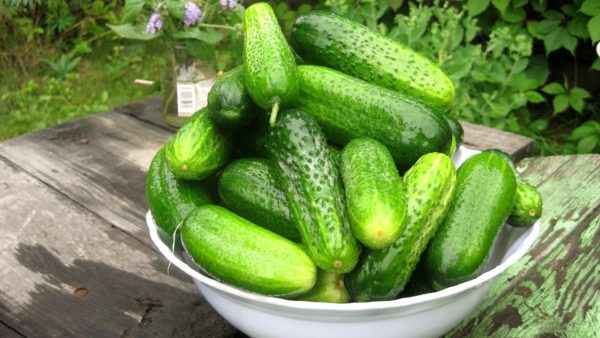
Cucumbers are very thermophilic crops. Until recently, it was believed that they would not be able to grow in harsh conditions. Currently, there are new varieties of cucumbers that can be grown in 2018 even in harsh climatic conditions. They are a product of Siberian breeding.
When choosing new varieties in 2018, you can get a rich crop of cucumbers in Siberia and other regions with low temperatures. The cultivation of varieties and hybrids developed by the Siberian school of selection will bring gardeners-lovers only positive emotions and will help to enjoy fresh vegetables in conditions of extreme farming. Breeders have bred varieties that can be grown in open ground and a greenhouse, the best of which will be discussed below.
Content
Advantages of Siberian Cucumbers
Cucumber plants recently bred in Siberia have a number of advantages, which is why gardeners choose them for planting on their sites:
- the plants are hardened, hardy and able to give a rich harvest while lowering the temperature to plus 10-12 degrees;
- fast ripening;
- the possibility of growth on any land;
- they are able to withstand various garden diseases.
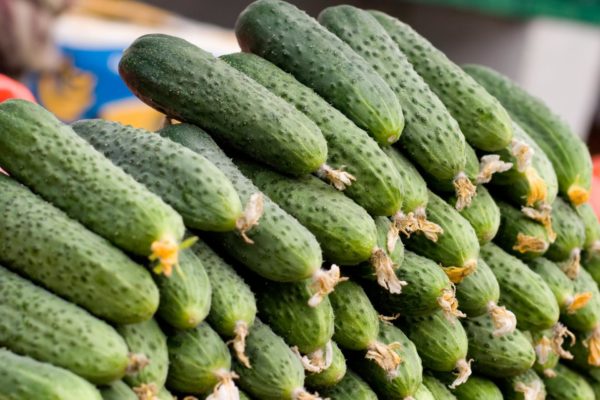
Popular varieties for growing in a greenhouse
Recently, Siberian breeders have bred several varieties that can be grown in regions of risky farming only in greenhouse conditions. These include the following:
- Knop.
- Claudia
- Zadavaka.
- Balcony miracle.
Let's consider each of them in more detail.
Knopa
Cucumbers ripen for a short time period, from the appearance of the first sprouts to the maturation of the first cucumbers, 40 days pass. Fruits are small in size, each of them is less than 10 cm.
As the plants grow, lashes of medium length appear, on which an ovary of a bouquet appearance appears. In each node, the formation of 3-5 fruits of a bright emerald hue. There is no bitterness in them, the taste is excellent, the fruits look very appetizing.
The plant is resistant to disease. With minimal care, consisting of regular watering, weeding from weeds, loosening and fertilizing, the plant gives a large crop of cucumbers.
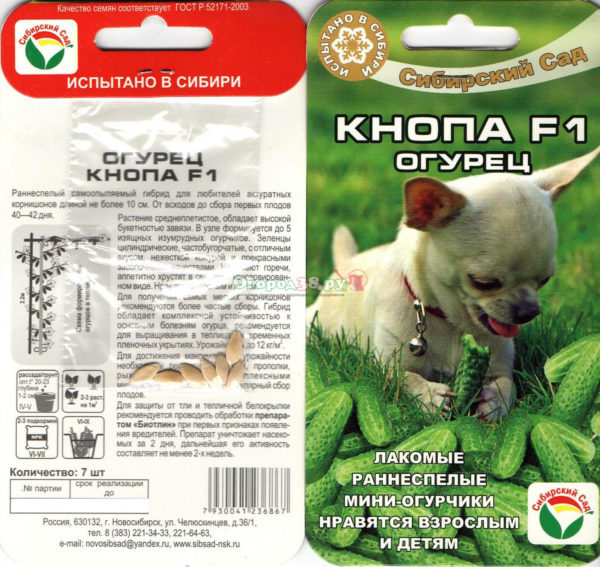
Claudia
This hybrid has several advantages, so gardeners are increasingly choosing it for planting in their areas:
- self-pollination;
- the speed of ripening, from the appearance of boring to the ripening of cucumbers, takes from 46 to 55 days;
- a large and stable yield, provided there is a sufficient amount of nutrients;
- lack of bitterness;
- the possibility of salting and canning.
Hybrid can be grown only in greenhouse conditions. The size of the fruit is from 10 to 12 cm. They have sufficient density, taste pleasant and crispy. The plant grows powerfully, the ovaries are arranged in a bunch, in each from 4 to 6 green leaves ripen.
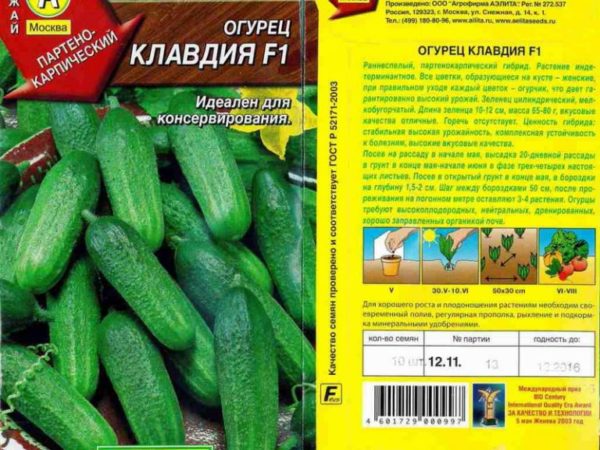
Zadavaka
This representative of Siberian breeding, like the hybrids described above, can be grown in greenhouses. It gives an excellent crop even with insufficient lighting.Fruits can be tied even at a temperature of plus 5 degrees. Harvest pleases for a very long time until finally freezing weather is established.
Growth is strong and powerful. On each ovary, 5-6 greens of 10-centimeter size appear.
Balcony miracle. Hybrid culture weaves weakly, has an average size. The ovaries are collected in small bundles, on each of which 3-4 green leaves can ripen at the same time. Each vegetable weighs about 80 g.
During the season, each bush is able to produce about 8 kg of selected fruits, pleasant and fragrant in taste.
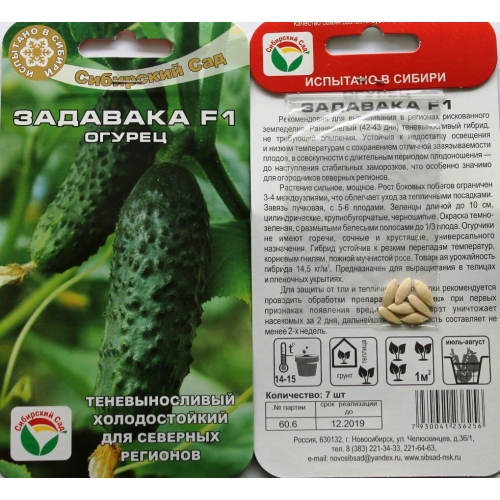
Varieties for outdoor cultivation
Currently, there are a large number of varieties that can be grown in open ground, most of them are the product of the Siberian selection school.
Today, the most popular varieties include:
- Altai.
- Ginga.
- Libelle.
- New Year's garland.
- Elegant.
- Miranda.
All of them will be considered in more detail.
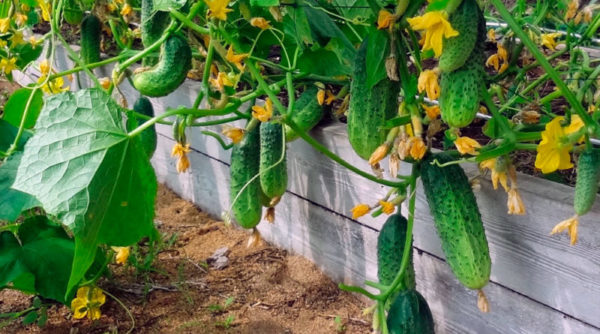
Altai
Seeds can be sown when the soil temperature in the daytime is warmed up to a twenty-degree mark. At night, the temperature should not be below 8 degrees Celsius.
The plant grows powerfully. On the ovaries at the same time appears from 5 to 7 cucumbers. The length of each fruit varies from 9 to 13 cm, but sometimes you can also find 15-centimeter specimens. The taste of the fruit is original, there is no bitterness in it. Grown up cucumbers in 4 days.
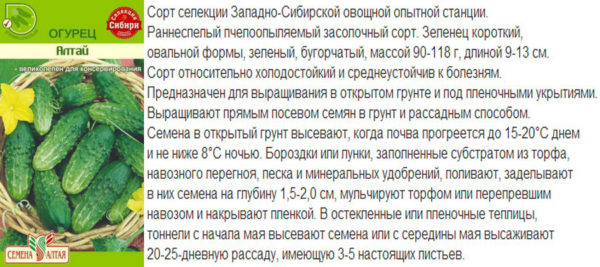
Libelle
Ripening occurs within 50 days. The plant is pollinated by bees, produces crops in greenhouses and in the open. The green leaf's shape resembles an elongated ellipse. The fruits are covered with small tubercles, each weighs about 100 g. The taste of cucumbers is excellent, without the presence of bitterness. Plants give a large crop at the end of the summer period.
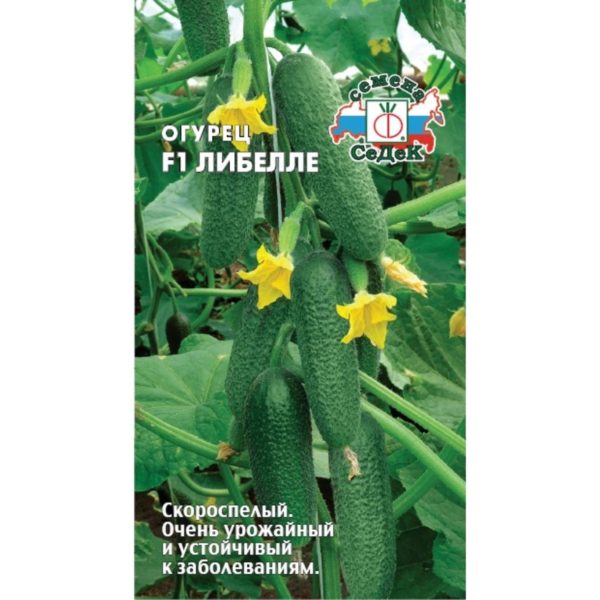
Siberian garland
On lashes, like a New Year's garland, at the same time a large number of cucumbers ripen from 5 to 9 cm long. The plant self-pollinates. You can grease. The taste of this does not change at all. The fruits are fragrant and crispy. It gives an excellent yield when the temperature drops to plus 10 degrees Celsius. Withstands the effects of various diseases.
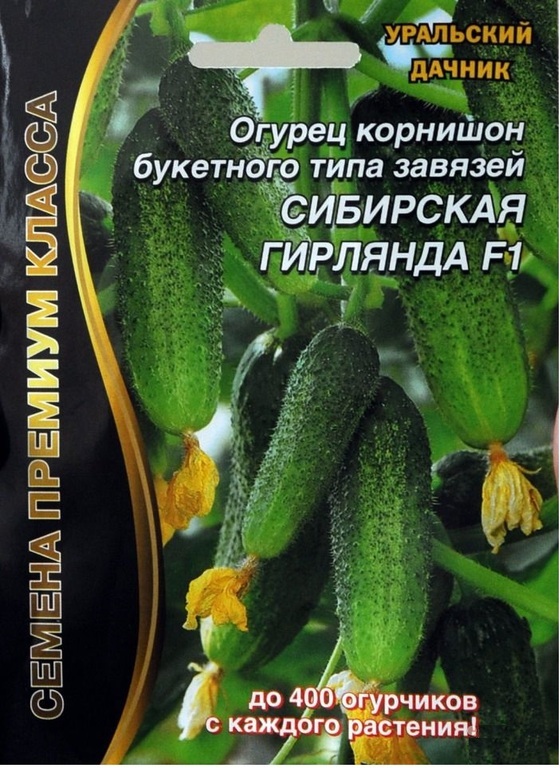
Elegant
Can be grown in open ground. The lash size is medium. The fruits have an average length of 10 to 13 cm. The taste is excellent, without any bitterness. The fruits are crunching. Zelentsy likes both children and adults. Cucumbers for salads, salting and preservation are great.
Mels
The hybrid is ultra-ripe, the first fruits can be enjoyed in 35-37 days. The fruits have an average size - from 8 to 10 cm. Special care for the crop is not required. It has a great taste. You can eat cucumbers fresh. Fans note that any dish with Mels cucumbers becomes tasty and original.
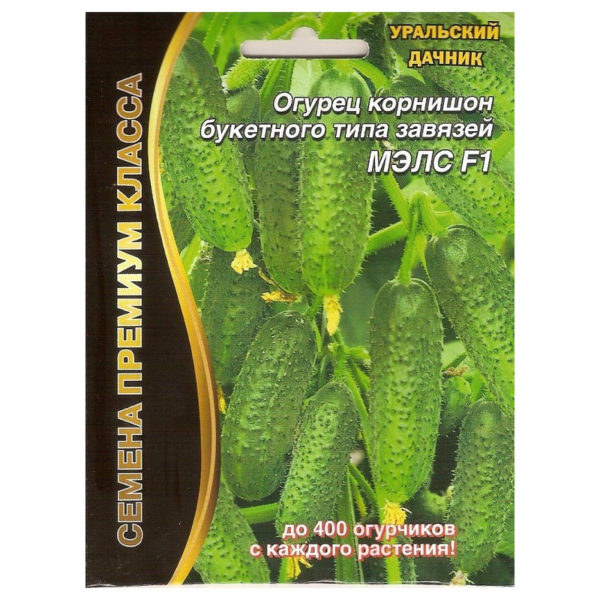
Miranda
A hybrid can give an excellent crop in all weather conditions and on any land. It has a good survival rate. The plant self-pollinates. The bush is quite developed.Fruits of a bright green hue with small specks of light tone. There are pimples on the surface. The size of greens can vary from 9 to 12 cm with a weight of 120 g.
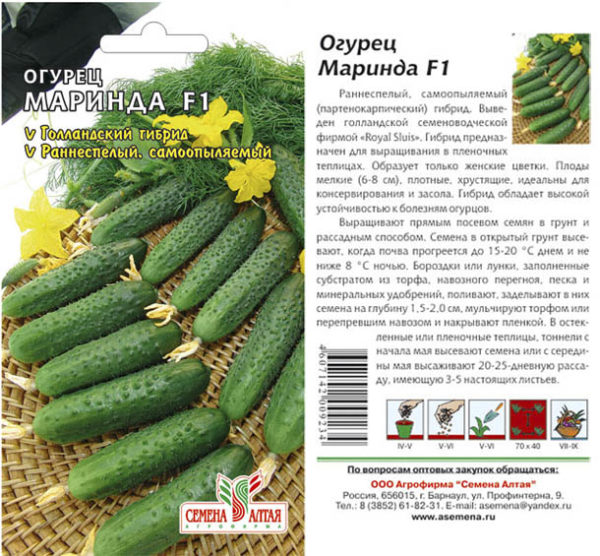
How to increase productivity
New varieties of cucumbers can give an excellent harvest in 2018 already thanks to the development of the Siberian selection school, but you need to know some secrets so that the number of fruits is large:
- It is necessary to "support" the root system. When the plant is weakened, its stem should be sprinkled with earth. This is necessary to fix the cucumber in the ground, which will contribute to a good harvest.
- You can feed the plants every week with diluted milk. For 2 parts of milk, one part of water is taken.
- Bushes are watered every day early in the morning or late in the evening, while water should not fall on a leaf plate.
- Before planting, the soil is fertilized. The increase in productivity is accompanied by the addition of manure or thin sawdust to the soil.
- Timely and frequent loosening of the earth with a rake or shovel.
- Help in pollination. If few bees fly over the beds, you should help the plant pollinate with a soft brush.
Cucumbers are quite unpretentious plants. Even with minimal care, you can significantly increase the productivity of the already prolific Siberian varieties.




 Armenian cucumber with melon flavor: description and characteristics, reviews
Armenian cucumber with melon flavor: description and characteristics, reviews Do-it-yourself vertical beds for cucumbers: schemes, photos
Do-it-yourself vertical beds for cucumbers: schemes, photos Hollow cucumbers: reasons for the appearance of hollow, what to do
Hollow cucumbers: reasons for the appearance of hollow, what to do Which manure is best for cucumbers: application, how to breed
Which manure is best for cucumbers: application, how to breed